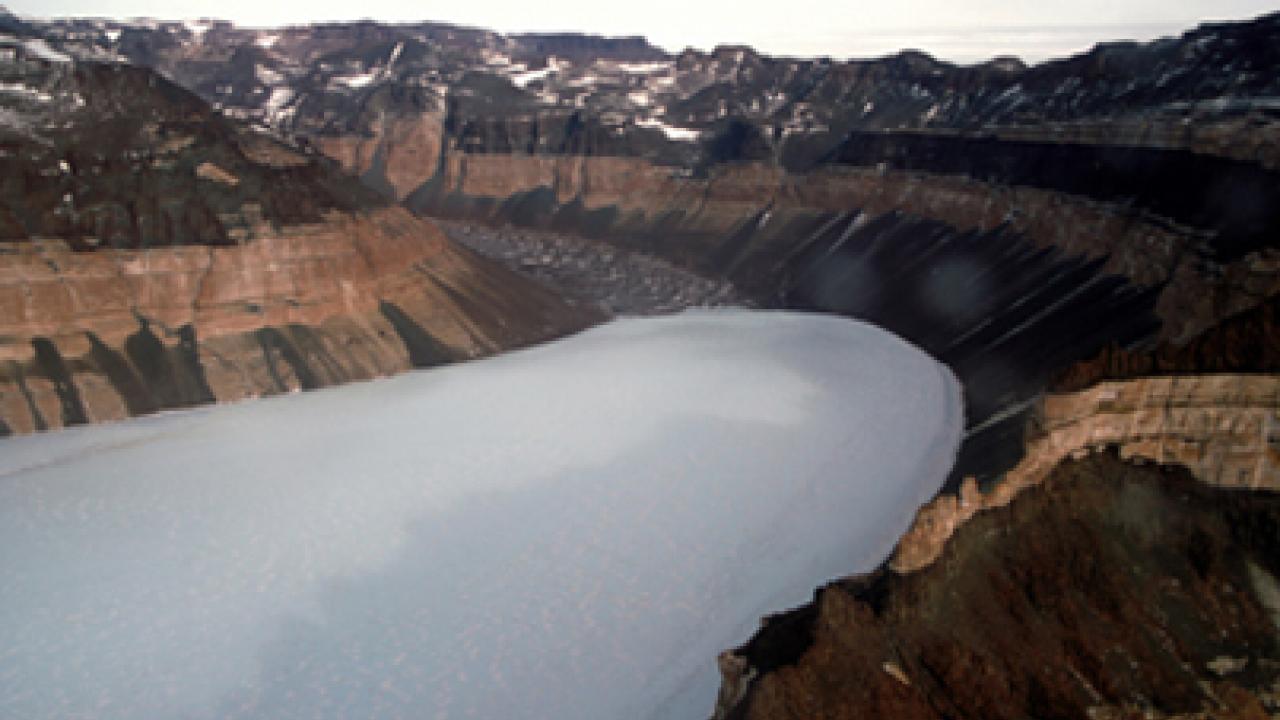UC Davis geologist Isabel Montañez says the transition from an ice age to an ice-free planet 300 million years ago was highly unstable, marked by dips and rises in carbon dioxide, extreme swings in climate and drastic effects on tropical vegetation.
A paper on this topic appeared in the Jan. 5 edition of Science, with Professor Montañez as the paper's lead author.
"This is the best documented record we have of what happens to the climate system during long-term global warming following an ice age," Montañez said. She noted that the findings cannot be applied directly to today's global warming trends.
In the mid-Permian, 300 million years ago, the Earth was in an ice age. Miles-thick ice sheets covered much of the southern continent, and floating pack ice likely covered the northern polar ocean. The tropics were dominated by lush rainforests, now preserved as coal beds.
Forty million years later, all the ice was gone. The world was a hot, dry place, vegetation was sparse, soils little more than drifts of wind-blown dust. "You'd have to be a reptile to want to live there," Montañez said.
Ice sheets lefts scars, other clues
She and her co-authors derived records of atmospheric carbon dioxide from ancient soils that have been preserved as rocks, and from plant fossils and coal. They extracted a record of sea surface temperatures from the fossils of brachiopod shellfish and looked at the extensive records of past plant life from fossils of the ancient rainforests. To see how glaciers advanced and retreated, the researchers looked at the scars and other clues left by the ice sheets that covered the great southern continent of Gondwanaland, which included most of the land masses of the modern southern hemisphere.
The scientists placed statistical constraints on their data with computer modeling by Deb Niemeier, professor of civil and environmental engineering and director of the John Muir Institute of the Environment at UC Davis.
The new data show that throughout millions of years, atmospheric carbon dioxide levels swung back and forth between about 250 parts per million, close to present-day levels, to more than 2,000 parts per million. The ice sheets retreated as carbon dioxide rose and expanded again when levels fell, a pattern compatible with the idea that greenhouse gases caused the end of the late Paleozoic ice age.
Scientists had assumed that as the climate warmed, a tipping point would be reached — and at this point the ice sheets would melt rapidly and for good. Instead, the new data show that the climate went back and forth between the extremes. But the overall trend was to warming, and by 260 million years ago, the ice sheets were gone.
Records of fossil plants show rapid changes in tropical plant communities as the climate changed. On scales of a few thousand years, lush forests of tree ferns in cool, wet periods alternated with conifers and other plants adapted to a harsher, drier and warmer climate.
Montañez said the data is not directly applicable to today's global warming because today's rise in atmospheric carbon dioxide is occurring in a much shorter time scale, for one thing. While these data cover millions of years, similar events might take place during a much shorter time span.
"Perhaps this is the behavior one should expect when we go through a major climate transition."
Media Resources
Dave Jones, Dateline, 530-752-6556, dljones@ucdavis.edu
